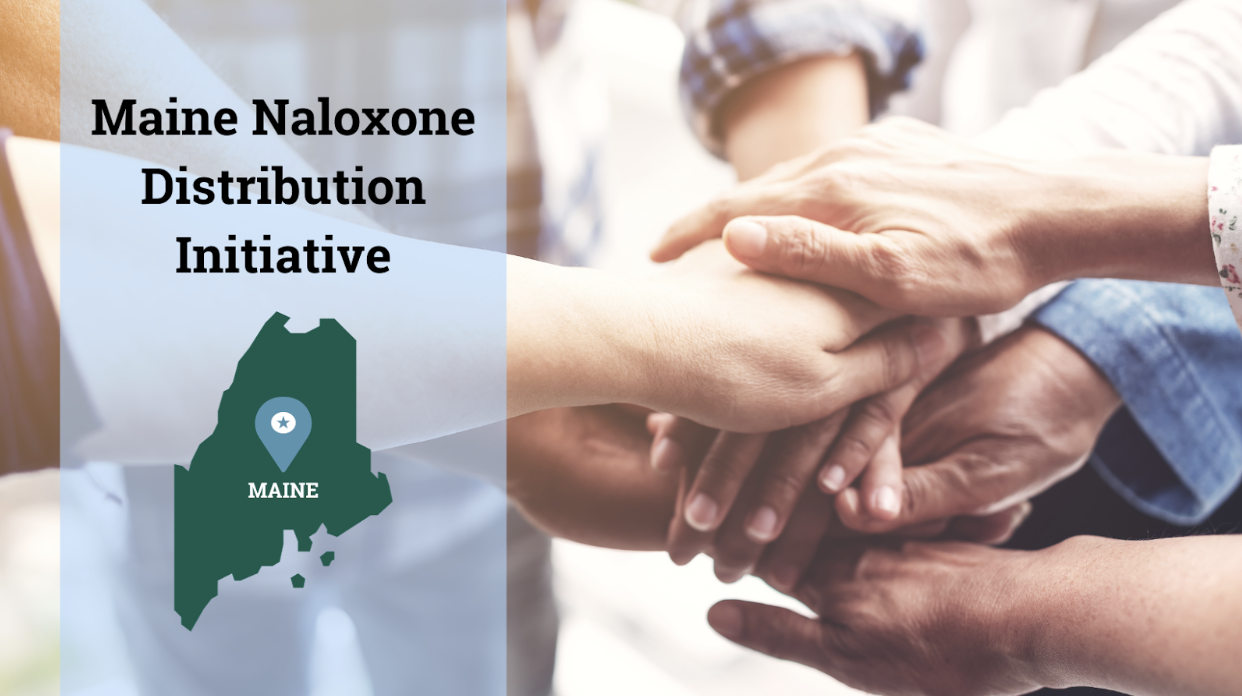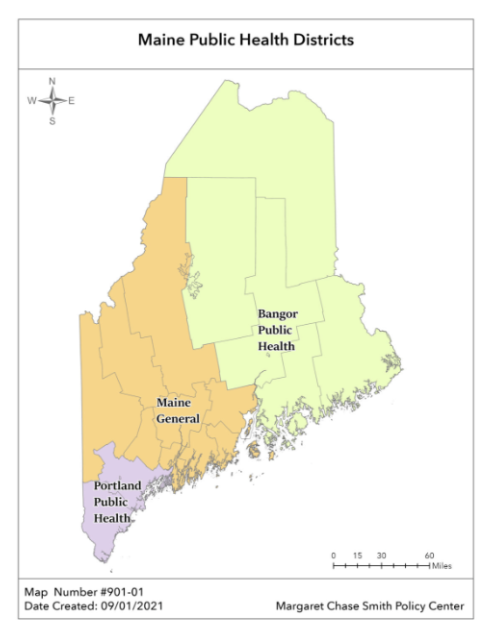
The University of Maine’s Collaboration with the Naloxone Distribution Initiative Tackles Maine’s Opioid Epidemic through Harm Reduction
he opioid epidemic, an ongoing crisis in the U.S. since the 1990s, witnessed a surge in synthetic opioid use in 2013, according to the Centers for Disease Control (CDC). Maine, like many states, is severely affected by the crisis, with nearly 4,600 opioid overdose deaths recorded from 2010 to 2022, according to Maine’s Opioid Response Strategic Action Plan. The Maine Naloxone Distribution Initiative (MNDI), overseen by the Maine Office of Behavioral Health in collaboration with the University of Maine (UMaine), is led by project director and UMaine graduate student Alexander Rezk, and aims to combat the opioid crisis, primarily driven by illicit fentanyl, by increasing naloxone accessibility in Maine.
Governor Mills’ 2019 Executive Order #2 launched the initiative to combat the opioid epidemic and enhance naloxone access. UMaine’s collaboration with MNDI supports the initiative’s growth and leverages UMaine researchers’ findings on naloxone distribution. UMaine researchers have identified that the current policy literature on naloxone saturation does not adequately address the needs of rural communities in Maine. They are developing a custom saturation assessment methodology for rural states to better align distribution efforts with community needs. Additionally, UMaine has partnered with state agencies to establish qualitative engagement spaces, including the State’s first Harm Reduction Learning Collaborative and public-facing reports on drug data in Maine, available on the Maine Drug Data Hub.
The MNDI adopts a multidisciplinary distribution approach that covers various stakeholders, including harm reduction agencies, public health organizations, and medical institutions. This comprehensive approach to stakeholder engagement ensures that naloxone reaches individuals at all levels of need. The initiative uses a tiered distribution network of four primary (or Tier 1) distributors to reach Maine’s diverse communities. Tier 1 distributors include:

- Portland Public Health (supporting Southern Maine).
- Bangor Public Health (supporting Northern and Downeast Maine).
- MaineGeneral Medical Center (supporting Central and Midcoast Maine).
- Maine Access Points (supporting statewide access through peer distribution).
Each Tier 1 partner obtains and distributes naloxone to respective networks of recipients called Tier 2 organizations or individuals. Tier 2 recipients include both redistributors (organizations supporting the flow of MNDI resources into the community) and “have-it-on-handers” (organizations or individuals seeking naloxone for preventative use). This tiered approach ensures comprehensive distribution across the State.
The MNDI has seen remarkable growth since its inception. Rezk highlighted the exponential increase in Tier 2 organizations, which grew from 52 organizations in 2019 to over 480 by 2023, more than an 800% increase over five years. The initiative’s success is further demonstrated by the significant number of naloxone doses distributed, over 384,532 to date, with over 7,173 voluntarily reported overdose reversals facilitated by the naloxone provided by the program.
While the initiative’s growth is encouraging, it has encountered challenges and barriers many stemming from the COVID-19 pandemic. Rezk remarked, “Watching the public health crisis of the opioid epidemic intertwine with the public health crisis of the COVID-19 pandemic challenged our efforts significantly.” The emergency rules related to the COVID-19 pandemic also had implications for harm-reduction activities, affecting the exchange of needles and other harm-reduction practices, such as the organization’s ability to meet needs within the community during times of quarantine.
Representing the Overdose Education and Naloxone Distribution (OEND) program, the MDNI emphasizes education and training, recognizing that naloxone can be a life-saving reversal agent of drug overdoses when used correctly. In addition to targeted training available from Tier 1 distributors, the initiative offers a range of resources and education, including the GetMaineNaloxone.org website and the ODME mobile response app, which provide training materials and guidance on naloxone administration. Rezk noted a cultural shift in the stigma surrounding drug use and harm reduction practices as the initiative has grown. “As we’ve persisted in this work, those interested in how they can fold overdose awareness and response into their normative first aid accommodations have increased, representing the shift in culture and awareness towards a harm-reduction approach.”
Harm reduction is at the core of the initiative. Rezk stated, “It centers the dignity of people who use drugs (PWUD), ensuring their equitable access to vital health resources.” The MNDI thus serves as a cornerstone for harm reduction initiatives in Maine and a model for those interested in adopting similar principles to address the needs of those affected by the opioid epidemic at a national scale. The program demonstrates the importance of fluid, collaborative, and community-driven harm-reduction efforts by actively involving a diverse group of stakeholders and the research community, and staying adaptable in response to changing drug landscapes.
Whether you need assistance or want to learn more about how you can obtain naloxone, please visit GetMaineNaloxone.org. For additional questions or information about the initiative, please get in touch with Alexander Rezk (alexander.rezk@maine.edu).
Contact: research@maine.edu
Written by Karalyn Kutzer
